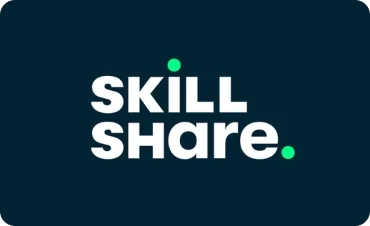When you enroll through our links, we may earn a small commission—at no extra cost to you. This helps keep our platform free and inspires us to add more value.

Creating a Street Environment in Unreal Engine 5
Unlock creativity with Skillshare! Learn acrylic painting, AI writing, graphic design, and photography. Explore thousands of engaging courses and develop new skills at�your�own�pace!

This Course Includes
 skillshare
skillshare 0 (0 reviews )
0 (0 reviews ) 9 hours 20 minutes
9 hours 20 minutes  english
english Online - Self Paced
Online - Self Paced course
course SkillShare
SkillShare
About Creating a Street Environment in Unreal Engine 5
Introduction
Setting up the Reference Images
Creating the Blockout
Modelling the Residential Building
Detailing the Residential Building
Creating Doors and Windows
Creating the Electric Meters
Modelling the Second Building
Creating the Store Building
Applying the Modifiers
UV Unwrapping the Buildings
Exporting to Substance Painter
Texturing the Residential Building
Adding more Details
Texturing the Variation
Texturing the Second Building
Texturing the Store Building
Setting up in Unreal Engine
Exporting Textures
Texturing the Ground
Setting up Post-Processing
Modelling the Beer Crates
Texturing the Beer Crates
Modelling the Sign Boards
Texturing the Sign Boards
Modelling the Cardboard Boxes
Importing the Props into UE5
Placing the Props
Modelling the Electric Pole
Texturing the Electric Pole
Adding the Cables
Finishing Touches
What You Will Learn?
- Hello Everyone and welcome to this new course. In this course, we will go over the entire process of creating a Japanese Street Environment using Unreal Engine 5, Blender, Substance Painter..
- We will go over modelling in Blender, texturing using Substance Painter and setting up the scene, lighting and materials in Unreal Engine 5..
- You will get:.
- 1. 32 Full HD video lectures with over 9+ hours of content and AUDIO commentary..
- 2. All the files related to the course including .blend files, unreal project files, substance files, reference images, textures etc..
- SOFTWARES USED - (BLENDER, Substance Painter, Unreal Engine 5):.
- All the modelling will be done in Blender, However, the techniques used are universal and can be replicated in any other 3D modelling package. The materials and textures will be created using Substance Painter. Level art, lighting and composition will be done in Unreal Engine 5..
- In this course, you will learn everything you need to know to create the final results that you see in the images and trailers. The same techniques can be applied to almost any type of environment..
- This course has over 9 hours of content! (All the videos have audio commentary).
- We will go over each and every step in this course together and nothing will be skipped. The course does not have any kind of timelapse so that you can follow every step easily..
- We will start by gathering some reference images to gain some initial ideas and the mood for our scene. We will arrange these reference images in a free program called Pure Ref. After this we will move on to Blender and start modelling our main assets. We will start by modelling the main buildings in our scene and after we are done with them, we will also create a bunch of different props to detail our scene even more, the entire process of modelling will be covered in Blender only..
- After we have modeled all our main assets, we will export them to Substance Painter to start the texturing process. We will learn to create high quality and realistic materials and the key features of Substance Painter like Smart Masks, generators, smart materials etc..
- After this we will import all our models and textures into Unreal Engine and setup the scene over there. The next step would be to setup our lighting and create a mood and atmosphere for our scene. We will make use of the new features of Unreal Engine such as Lumen to get realistic lighting for our scene, next we will set up a post-Processing volume to further enhance the visuals of our scene..
- Then we will spend some more time creating a lot of small props to further detail the scene even more like some cardboard boxes, beer crates etc. We will end this course by adding a couple of props from Quixel Megascans to give the environment a finishing touch, setting up different camera angles and taking high resolution screenshots for our portfolio..
- So, I hope to see you there in the course, thank you..
- Who is this course for?.
- Students that have basic knowledge of modelling, texturing and want to learn how to create environments. Everything in this course would be explained in detailed but some prior knowledge of the software would be helpful..